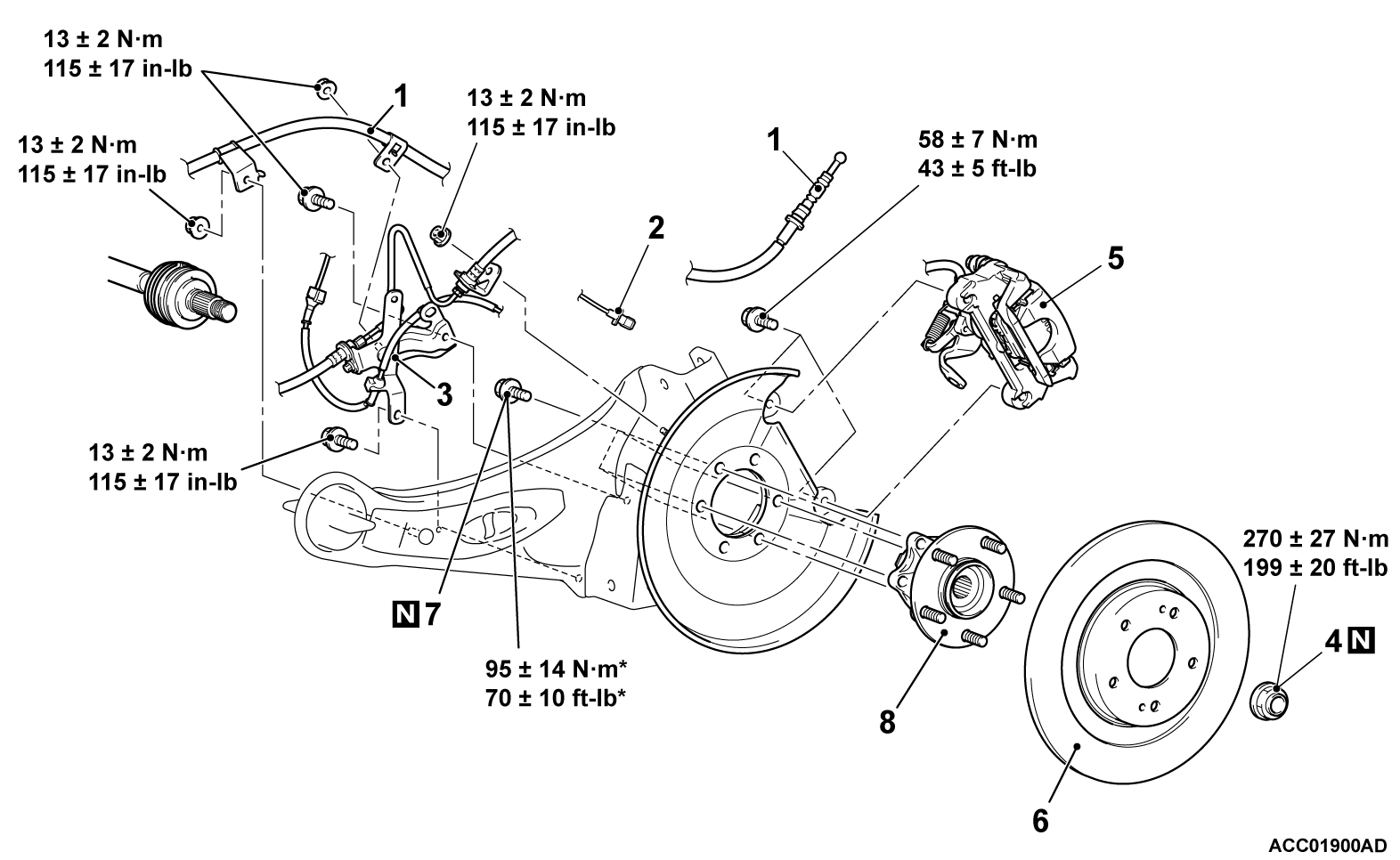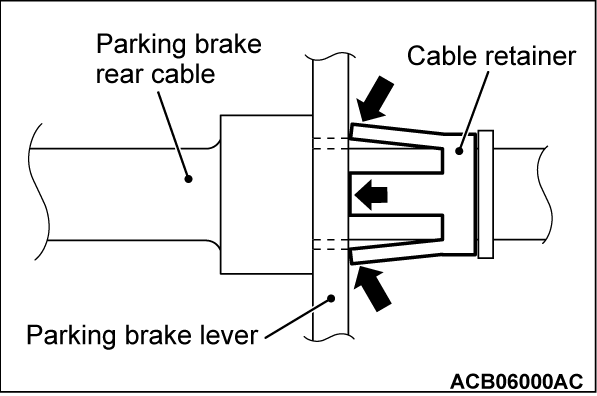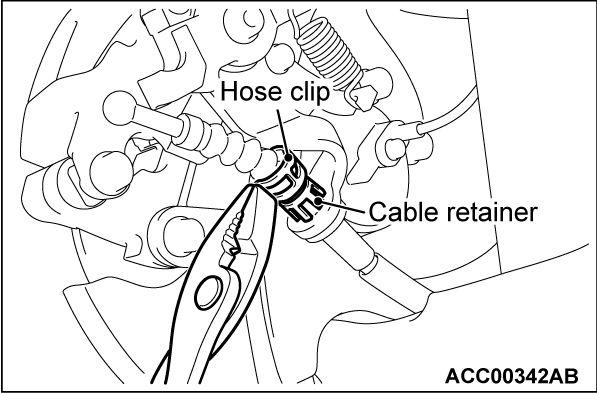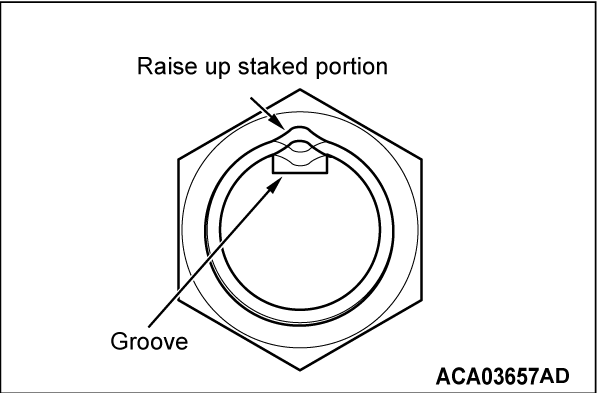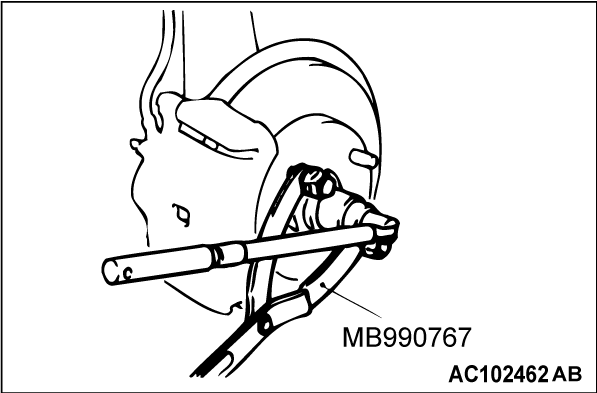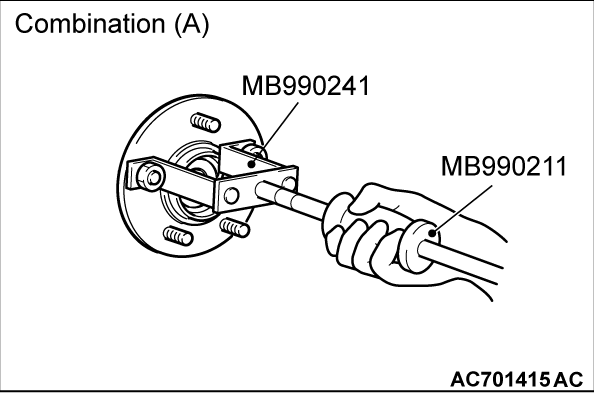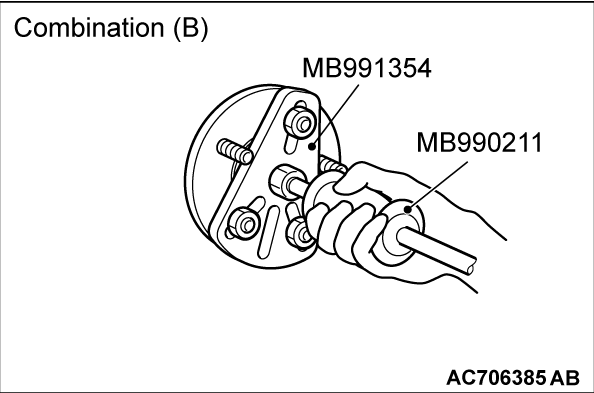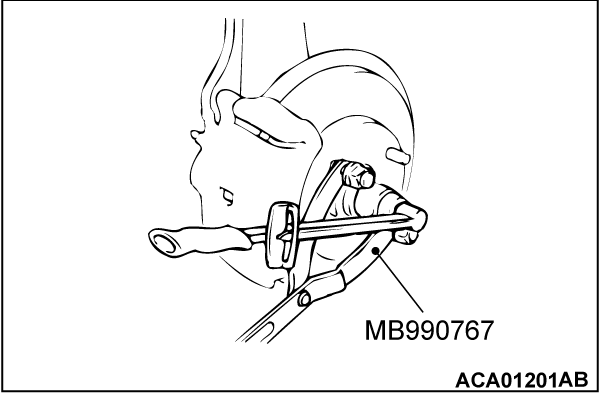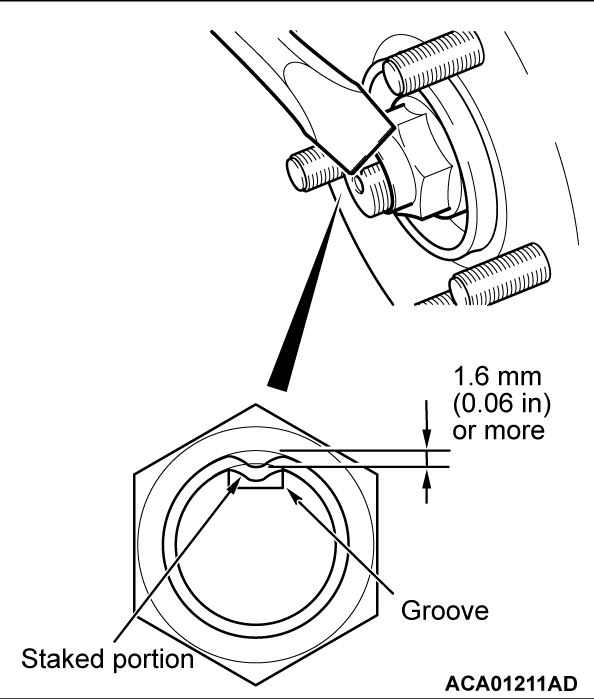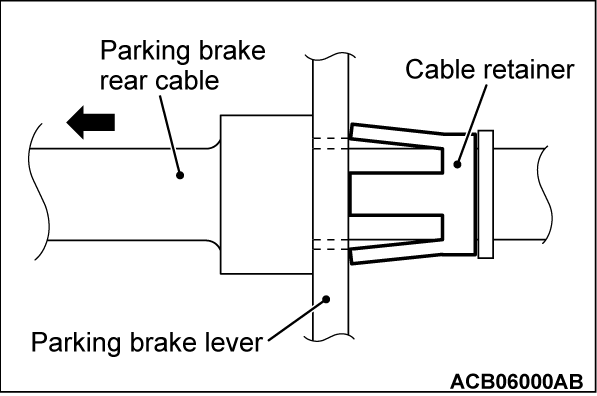REMOVAL AND INSTALLATION
| caution |
|
Required Special Tools:
- MB990211: Slide Hammer
- MB990241: Rear Axle Shaft Puller
- MB990242: Puller Shaft
- MB990244: Puller Bar
- MB990767: Front Hub and Flange Yoke Holder
- MB991354: Puller Body
- MB992700: Lock Nut Chisel
REMOVAL SERVICE POINTS
<<A>> PARKING BRAKE REAR CABLE CONNECTION REMOVAL <REAR BRAKE CALIPER ASSEMBLY SIDE>
Compress the tabs on the cable retainer to pull out the parking brake cable through the parking lever hole of the rear brake caliper assembly.
| note |
|
<<B>> DRIVESHAFT NUT REMOVAL
1.
Set the special tool MB992700 in the groove of the driveshaft with its "UPPER" mark facing upwards. Then strike the staked portion of the driveshaft nut with the chisel and a hammer to raise up.
| caution |
|
2.
Raise up the staked portion of the driveshaft nut until it does not interfere with the shaft thread.
| caution | Be careful not to damage the thread of the driveshaft. |
3.
Use special tool MB990767 to counter the hub as shown in the figure to remove the driveshaft nut.
| caution |
|
<<C>> CALIPER ASSEMBLY REMOVAL
1. Remove the caliper assembly with brake hose.
2. Secure the removed caliper assembly with a wire or other similar material at a position where it will not interfere with the removal and installation of the rear wheel hub assembly.
<<D>> REAR WHEEL HUB ASSEMBLY REMOVAL
1. If the rear wheel hub assembly is seized with the rear driveshaft assembly, use special tools MB990242 and MB990244, MB991354 and MB990767 to push the rear driveshaft assembly out from the hub and then remove the rear wheel hub assembly.
2. If the rear wheel hub assembly is seized with the knuckle, use special tools MB990211 and MB990241 {combination (A)}, or MB990211 and MB991354 {combination (B)} to remove the rear wheel hub assembly.
INSTALLATION SERVICE POINTS
>>A<< DRIVESHAFT NUT INSTALLATION
| caution |
|
1. Check the hub seated surface for damage or corrosion. Whenever solvent is used for removing the corrosion, the surface should be degreased.
2. Check that the new driveshaft nut can be turned smoothly by hand. Then tighten it until it is seated.
3. Using special tool MB990767, tighten the driveshaft nut.
Tightening torque: 270 ± 27 N·m (199 ± 20 ft-lb)
4. After tightening to the specified torque, check that the nut is seated securely.
5. Use the chisel and a hammer to stake the nut until the center in the staked portion reaches the shown dimension.
6. Finally, check that the nut is not cracked at its staked portion.
>>B<< PARKING BRAKE REAR CABLE CONNECTION INSTALLATION <REAR BRAKE CALIPER ASSEMBLY SIDE>
1. Guide the parking brake cable through the parking lever hole of the rear brake caliper assembly to the cable retainer.
2. Pull back the parking brake cable to assure it is tightly fastened to the cable retainer.
![[Previous]](../../../buttons/fprev.png)
![[Next]](../../../buttons/fnext.png)
